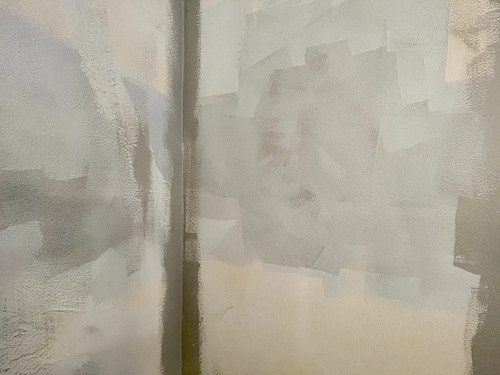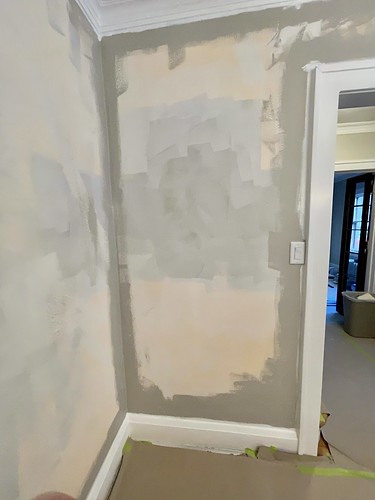From "Welcome to the Shoppy Shop/Why does every store suddenly look the same?" (NY Magazine).
২৬ জানুয়ারী, ২০২৩
"Successfully marketing a product so that it feels local everywhere is an art. I’ve started calling this crucial step in a product’s development 'smallwashing'..."
From "Welcome to the Shoppy Shop/Why does every store suddenly look the same?" (NY Magazine).
১১ জানুয়ারী, ২০২৩
২৫ ডিসেম্বর, ২০২২
"When you operate, especially if the operation is dangerous, you live very intensely. You live entirely in the present..."
"... and the world outside the operating theatre simply disappears. You are never bored. You cannot afford to make any mistakes. And making a mistake with your hands – your instruments slipping, for instance, or your hands shaking – is incredibly rare.... Working on the doll’s house in my workshop is a very different experience. My mind wanders and I often struggle against boredom, especially if the work is very repetitive, such as making multiple bannisters for a miniature staircase. I often get things wrong and have to saw up a new piece of wood and, cursing myself furiously, start all over again – not a luxury you have when operating."
Writes Henry Marsh in "After a long career in brain surgery, I’m trying my hand at making doll’s houses/To my surprise I don’t miss neurosurgery now I’ve retired, but still find joy in making things for my grandchildren" (The Guardian).
৩১ আগস্ট, ২০২১
"After the Americans leave, what will happen to Afghan artists and performers, cultural workers, and nongovernmental organization staffers engaged with heritage, traditional crafts and preservation?"
A young man who leads the local offices for an international cultural heritage organization said he was determined to stay in Afghanistan. “I am checking every day, and right now, things are normal and safe,” he said....
Some arts, including ceramics and woodwork, are passed on through a deeply conservative master-apprentice system which is embedded in traditional Afghan culture. Miniature painting, which has roots in Persian culture, too, is more fraught because it includes representational imagery and the human figure. During the Soviet occupation that began in 1979, rug-making — one of the most pervasive and revered Afghan crafts — morphed from an abstract craft to a field of resistance, with individual craftsmen making “war rugs” that recorded the brutality of the Russian war effort....
[One] leader of an organization that does cultural work in Afghanistan said...“Was everything we did for nothing?.... You can think of it like a building, a Jenga tower, and it all just fell down. But this is also about human capital. Millions of people got 20 years of relative stability, and freedom, and perhaps they will do something for their country. Maybe they will come back.”
১৯ জুলাই, ২০২১
"He appears to be a machinist, at least by avocation and possibly professionally. He has access to very good tools: a lathe, a sandblasting cabinet, a milling machine, drill bits he keeps intimidatingly sharp."
From "Watching Perfectionist Restorers As They Work Is Incredibly Soothing" (NY Magazine).
Example highlighted in the article, which I watched in its 17-minute entirety is "Rusty Deadlocked Vise - Perfect Restoration":
৩ মে, ২০১৫
"I would like to talk about ‘Sleeping Beauty’ and ‘Swan Lake,’ about my battements and my handsome partners..."
Her father was shot to death in 1938 in Stalin’s purges. (Ms. Plisetskaya learned the date of his death only in 1989.) Her mother was arrested and sent to a labor camp with her infant son, then exiled to Kazakhstan....I'd like to hear more specifically how ballet movements could be thought to contain political ideology. I once met a woman in Madison who had learned a difficult craft that produced a type of ordinary object — a lovely version of something quite utilitarian. She expressed anguish in not yet having found a way to make these objects political. I said I thought that loading politics into art tended to make bad art. I dreamed of interesting conversations in Madison. Many years later, I started this blog.
Ms. Plisetskaya was... restricted by the Bolshoi’s rigid Soviet guidelines on choreography, which viewed the very movement of dance through the prism of ideology, yet she was able to infuse stultified, literal movements with much deeper meaning....
“I danced all of classical ballet and dreamed of something new,” she said. “In my time, it was impossible.”
ADDED: I don't like tag proliferation, so I'm using my "merging politics and showbiz" for this. It seems wrong to call ballet "showbiz," but think about it. Why is it wrong? It isn't!
Ah, but I remember I also have an "art and politics" tag. I remember that tag as I think of the conversation with the Madison artisan. Why did those crafted objects prompt me to think "art" when ballet did not? Because I thought of art school.
২৫ আগস্ট, ২০১৩
"I was happy with his work — and even happier with his presence in the house because he was a great moral force."
Imagine having a beach house in 1971, being 37 years old, having a 29-year-old Harrison Ford, doing carpentry work for you and experiencing him as a great moral force.
Didion was married, you should know. She married John Gregory Dunne in 1964, and they remained married until he dropped dead in 2003. I say "dropped dead" because I read "The Year of Magical Thinking," which begins with that scene.
But how was the young carpenter a moral force? Here's a little song:
১৩ আগস্ট, ২০১৩
Floored...
... and by the entry to the stairway, otherwise known as the gaping hole in the floor:
২৪ জুলাই, ২০১৩
What did Jesus do during the "unknown" — or "lost" or "silent" — years, between the ages of 12 and 30?
Some Arthurian legends hold that Jesus traveled to Britain as a boy, lived at Priddy in the Mendips, and built the first wattle cabin at Glastonbury. William Blake's early 19th century poem And did those feet in ancient time was inspired by the story of Jesus traveling to Britain. ...
In 1908 Levi H. Dowling published the Aquarian Gospel of Jesus the Christ which he claimed was channeled to him by a supernatural being called "Akashic Records" as the true story of the life of Jesus, including "the 'lost' eighteen years silent in the New Testament." The narrative follows the young Jesus across India, Tibet, Persia, Assyria, Greece and Egypt....The usual story is that he "simply lived in Galilee during that period."
২২ জুলাই, ২০১৩
"With this kind of work it is not push, push, push; you need to relax... you have to massage the stone rather than push it."
“I really rarely find someone who carves stone,” Oglesbay said. “A lot of people will putz around or use machinery, but people who carve it originally with hammers and chisels and use math and come up with the exact product are hard to find.”There are 50 to 90 stone carvers in the United States, according to Walter Arnold, treasurer and past president of the national Stone Carvers Guild, who says the number depends on what standard you apply: "if you limit to those good enough by 1913 standards to have held down a job in a good shop back then, the current numbers are significantly lower."
I'm making a new tag for this, artisans. I almost went with one of my old tags: art, sculpture, architecture, careers. Those are all almost there, but they are off in a way that amplifies the very problem the article is talking about. I also have a tag I'm not making a tag for this, but I could make a second new tag I am making a new tag for this. Having made the new tag, I wish I could go back and add it to all the old posts where it could have been used. I'd like to be able to see what has come up over the years, discussing the highly skilled work of those who produce beautiful things but do not think of themselves as artists. Or perhaps some of these people do think of themselves as artists (and maybe some painters and sculptors don't like to think of themselves as artists). I'd be interested in pulling together all that old material. If only I'd had better blogging craftsmanship.






